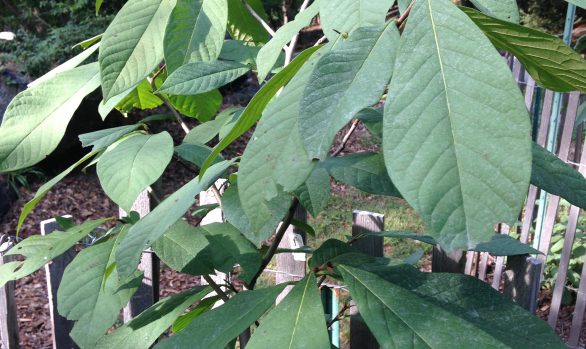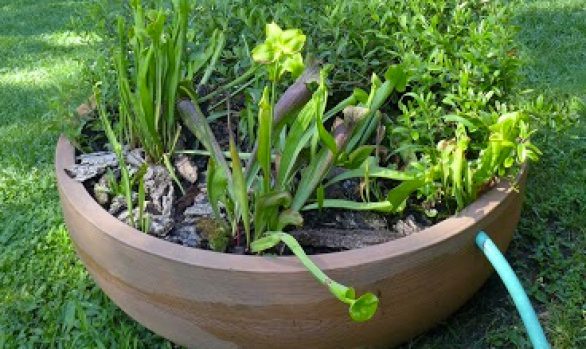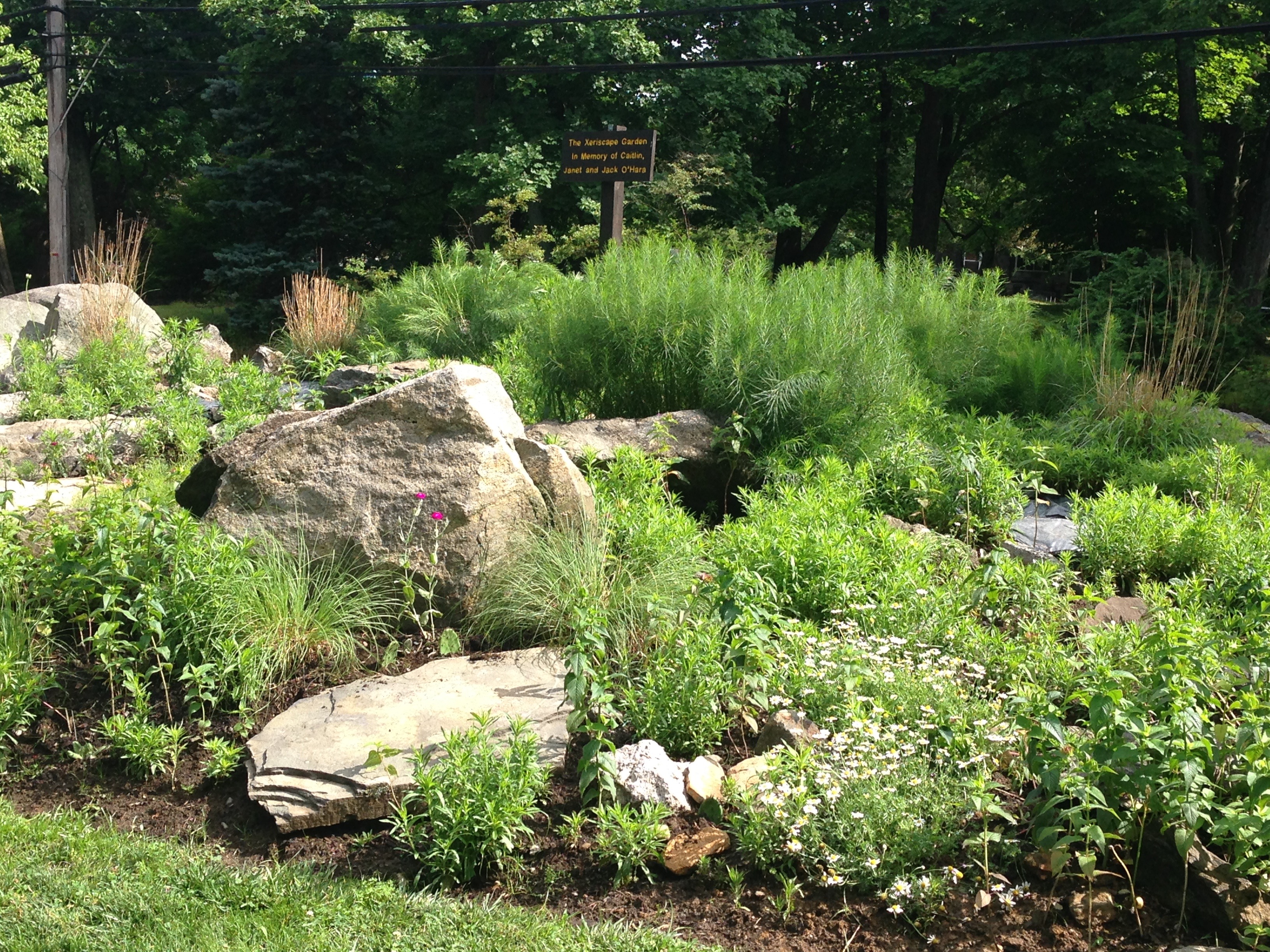Rain Gardens
Demonstration GardensObjective: Water conservation and the preservation of the natural water cycle, watershed management and water quality improvement, flood and erosion control, creation of a new ecosystem with beauty and wildlife habitat
Curriculum Content: The water cycle, watersheds, storm water management practices, water conservation, horticulture, ecosystems
The Suburban Landscape: Storm water harvesting, flood control, Erosion Reduction
The Upper Sun Rain Garden:
Storm water runoff from the front lawn and part of the parking lot flows into the upper rain garden. The garden is built on a slope, so the ponding area is deepest near the parking lot. Since the water from the driveway contain silt and mud, rocks are used to dissipate the energy of the runoff so that the silt adn mud can settle out before entering the main rain garden. Water is pooled at a depth of approximately 8-12″ to sustain plant growth. The overflow from this garden is carried through an underground conduit into a catch basin in the driveway in the front of the basement door.
The Catch Basin: The Basin receives overflow from the Upper rain garden, runoff from the driveway, stormwater from the leaders on the west side and front of the building through an underground conduit, and a berm along the edge of the driveway. This basin then empties into the rear rain garden through an underground conduit.
The Lower Shade Rain Garden:
This rain garden has been placed at the lowest point on the site and receives most of the stormwater runoff from the catch basin. Plant growth is fed by the water emptied into this garden. Overflow from this garden will enter the elevated drain if it gets deep enough, and be conveyed by a conduit into the nearby wooded area.




